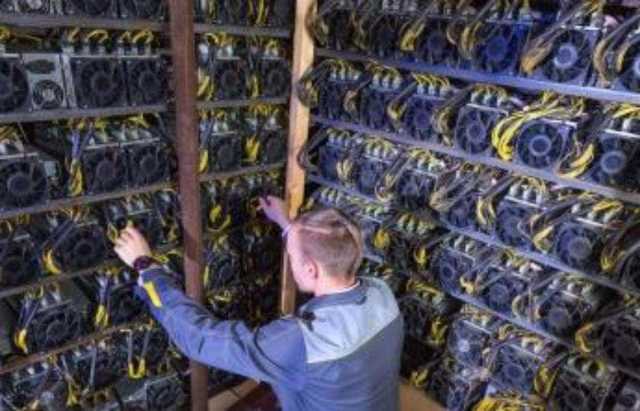
PoW requires all nodes to use their own computers to validate blockchain transactions. Miners generate new blocks by solving complex mathematical problems using vast amounts of electricity and advanced computational power. Miners compete to be the first to solve these problems to be able to validate new blocks and receive block rewards in the form of new coins. Bitcoin (BTC), the world’s most popular cryptocurrency, uses a PoW consensus mechanism. Proof of work (PoW) is a consensus algorithm used in blockchain networks, where participants solve complex mathematical puzzles to validate transactions and create new blocks.
- Proof of work requires users to mine or complete complex computational puzzles before submitting new transactions to the network.
- Popular proof-of-stake blockchains include Polkadot, Cardano and Ethereum as soon as it upgrades to Ethereum 2.0.
- This model prevents groups of people joining forces to dominate the network just to make a profit.
- When the block gets added, the validators get a block reward in proportion to their stake.
- If Casper (the new proof of stake consensus protocol) will be implemented, there will exist a validator pool.
- Remember that crypto runs on blockchains, which are like giant spreadsheets that keep track of transactions (e.g., John sent Jane 0.01 bitcoin), as well as who owns how much cryptocurrency.
Proof of work vs. proof of stake: What’s the difference?
While some are more straightforward and beginner-friendly than others, you shouldn’t encounter any difficulties with either of the top-rated exchanges. That said, many users believe that KuCoin is one of the simpler exchanges on the current market. What kind of methods of recovering your cryptocurrency assets in case you lose your wallet or forget your primary password does the wallet offer. In reality, the Proof of Stake VS Proof of Work argument is something that will always divide people’s opinions. However, seeing as though the original way of how to mine Ethereum is going to be changed, it’s clear to see which mechanism is the most favored. The first concern when discussing Proof of Stake VS Proof of Work is the issue that some people have about Proof of Stake helping the rich get richer.
Proof-of-work vs. proof-of-stake: Comparing two blockchain verification types
Bitcoin overcomes it by using an approach known as proof of work, as do several other major cryptocurrencies including Bitcoin Cash, and Litecoin. However, a growing number of platforms such as Ethereum, Solana, Avalanche, and Cardano, are now using an alternative known as proof of stake, which consumes much less energy. https://www.tokenexus.com/ A defining characteristic of most of the largest cryptocurrencies is that they are decentralized. But the lack of a central authority responsible for verifying transactions also presents a challenge. Meanwhile, environmental campaign groups such as Greenpeace have pushed for Bitcoin to switch to proof-of-stake.
Proof of Work vs. Proof of Stake: Which Is Better?

But if stakers attempt to do anything malicious to cheat the network or interfere with the production of a new block, they may lose a portion of their staked coins (or even get kicked off the network). Both validate transactions by way of agreement or “consensus.” But consensus among what? (There’s no “who” involved.) Various participating computers (nodes) on the network must be in agreement that a transaction is legitimate before it’s recorded.

Q: What is a consensus mechanism?
- The Ethereum Proof of Stake date is yet to be confirmed, however, the team is working hard to get there as quickly as possible.
- Proof of stake (PoS), on the other hand, relies on participants “staking” their cryptocurrency as collateral to be selected as validators and create new blocks.
- BitDegree.org does not endorse or suggest you to buy, sell or hold any kind of cryptocurrency.
- Our website and marketing collateral use reference rates as an indicator only and should not be used for decision making.
Banks record every single transaction on our behalf, updating a ‘datasheet’ that says who has an account and how much money they have in it. They are a single controlling entity with complete power over our finances. Essentially, we need their permission to send money to a friend or pay our bills.
Advocates argue that this link to real-world resources and constraints helps make it impractical for a single entity to manipulate the system. To manipulate a proof of stake system, one would only need to buy and stake a majority of the available coins—no supply chains or electricity necessary. The rule prevents multiple chains, each reflecting different versions of history, from existing side-by-side. The longer the consensual version of the blockchain becomes, the more computing power and resources would be needed to — in theory — roll it back. Proof-of-stake eliminates the need for mining, which makes it more energy-efficient.
If they try to attack the network, they can lose their entire stake. Proof of work was built into the design of Bitcoin, and replicated by other cryptocurrencies, including Ethereum. In doing so, they guard against “51% attacks,” which is when someone accumulates more than half of the computing power in a distributed network and can then control it. In this article we’ll explore what consensus mechanisms are, and how proof-of-stake differs from proof-of-work. Bitcoin, and other cryptocurrencies such as Dogecoin and Litecoin, secure their networks using the proof-of-work (PoW) consensus mechanism. On the other hand, the invention of liquid staking derivatives has led to centralization concerns because a few large providers manage large amounts of staked ETH.
Proof-of-work, mining and security
Validators on a proof-of-stake network such as Ethereum are chosen at random by the network to propose new blocks. Since the “merge” in September 2022, Ethereum has switched from a proof-of-work consensus mechanism to a proof-of-stake one. The proof of work vs. proof of stake debate involves important topics, including decentralization, transaction speeds, and the environment. It’s a critical discussion with implications that may affect the future of crypto. Just like proof-of-work, proof-of-stake is designed to achieve distributed consensus over the valid ordering of transactions — i.e., reaching agreement on a shared, single version of history. Notwithstanding any such relationship, no responsibility is accepted for the conduct of any third party nor the content or functionality of their websites or applications.

To lower their costs, mining companies constantly seek out the most efficient ways to mine. This process inherently rewards those who can find the cheapest forms of energy and come up with newer technology to create faster and more efficient chips for mining. I mentioned earlier in my Proof of Work VS Proof of Stake guide that some Proof of Stake vs Proof of Work Proof of Work blockchains like Bitcoin use large amounts of electricity. This is because the cryptographic sum that miners must solve is incredibly difficult. Consequently, just four mining pools (of which the majority are located in China where electricity is cheap) control more than 50% of the total Bitcoin mining power.
